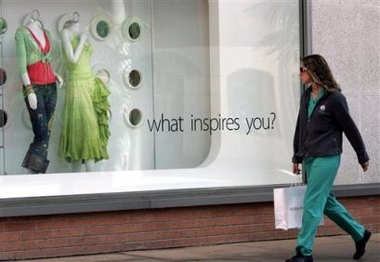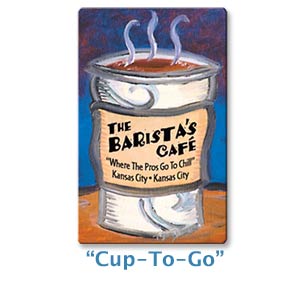Best retailers offer lessons for the taking
 A shopper looks at a Macy's display at Stanford Shopping Center in Palo Alto, Calif., Wednesday, July 6, 2005. The arrival of summer gave the nation's retailers their best showing in months in June (AP Photo/Paul Sakuma)
A shopper looks at a Macy's display at Stanford Shopping Center in Palo Alto, Calif., Wednesday, July 6, 2005. The arrival of summer gave the nation's retailers their best showing in months in June (AP Photo/Paul Sakuma) This article from the San Antonio Express-News, "Best retailers offer lessons for the taking" discusses loyalty programs and the examples, although from large companies, are still applicable to small businesses. From the article:
When I shop in retail stores, I don't just look for items I'm interested in buying and items I might need down the road. I also pay attention to what the stores are doing to attract customers, to keep them in the store, and to send them home happy with new purchases.
Though you might not think your business can learn much from retail operations, all businesses, at their core, are about trying to reach a certain group of people and build customer loyalty to the brand and the values it represents. Retail is an arena in which this is particularly crucial.
I've been paying attention to a few retail stores lately; they all happen to be clothing stores, and all happen to have come up in recent conversations with colleagues. These colleagues all recognized that the strategies they praised were designed to get them to part with their hard-earned cash, but all felt they got value in return, and they were likely to return to these stores.
The 5% lifetime discount once a customer spends $500 worth of clothing at Chico's is an idea that many independent stores, including home-furnishings-art-clothing stores can adapt.
 Although this isn't mentioned in the article, independent coffee shops and restaurants (and bookstores and pharmacies) can develop own-brand card and gift card programs that work just like Starbucks. Plasticard Plus is one such vendor.
Although this isn't mentioned in the article, independent coffee shops and restaurants (and bookstores and pharmacies) can develop own-brand card and gift card programs that work just like Starbucks. Plasticard Plus is one such vendor.__________
A discussion of the article on Retail Wire has excellent points--
I think the one general thing that binds all three is the attention to customer service and actually engaging the customer in conversation, making them feel more comfortable in their environment and, therefore, stay longer. And the longer you stay in a store, the more likely you are to buy something. However, when you look at all three you will see that their people are very good at suggestive selling. Take Chico's. If a woman is trying on a blouse, there will be a salesperson nearby to show her how well a jacket, a skirt or a piece of jewelry goes with it. Suggestive selling can be a very powerful tool when used properly. I think some of those principles can be applied to food retailing. - Len Lewis, BrainTrust Panelist
It's the EXPERIENCE stupid!" Creating a unique, thoughtful and pleasurable customer experience will give you more loyalty, higher per customer sales and ultimately more bottom line profit than any other strategy. Saving a little money in the process is great but that's the icing. Going back and back again because you love the experience of shopping in a place is the cake. To the great retail names in the article, I'd add Jos. A. Bank to the list. Yeah, I get 20% off because I'm in some club thing with them, but I go back frequently "just to see what they've got in" because they are extremely knowledgeable people who have fun doing what they do. I like the experience and I've bought something every time I've gone in. - Ian Percy, BrainTrust Panelist
Besides suggestive selling, the winning aspect of these successful companies is the fact that they clearly thought through the buying process in each of their outlets, which differ from one another. Knowing, for example, that women in VS are not likely to undress more than once shows they are paying attention to their customers and the ways in which they shop. There is no retail outlet that cannot benefit from simply paying attention to how their customers shop and discovering ways to smooth the process.- Karen Kingsley, RW Commentator
I like the simplicity of the Chico's loyalty program - $500 and you're in. Contrast that with one at a retailer I frequent - Staples. There, you have to spend $200 per quarter or some such number, to get rewards dollars. My last statement, I had spent $168, so I got a check in the mail for $0, which I can spend only at their store. Not the way to generate a lot of loyalty.- Al McClain, RW Commentator
All 3 retailers have these 3 things in common:
1. Their margins are based on exclusive products, so they have enough money to enhance the shopping experience
2. They've put themselves in their customers' shoes so they know appropriate marketing levers to pull
3. They've invested money, taken from the margins, to pull the right levers.
Many retailers have trouble building assortments that have enough margin to invest in shopping experience enhancements. And many retailers with the excellent margins do not invest the money appropriately.- Mark Lilien, BrainTrust Panelist



0 Comments:
Post a Comment
<< Home